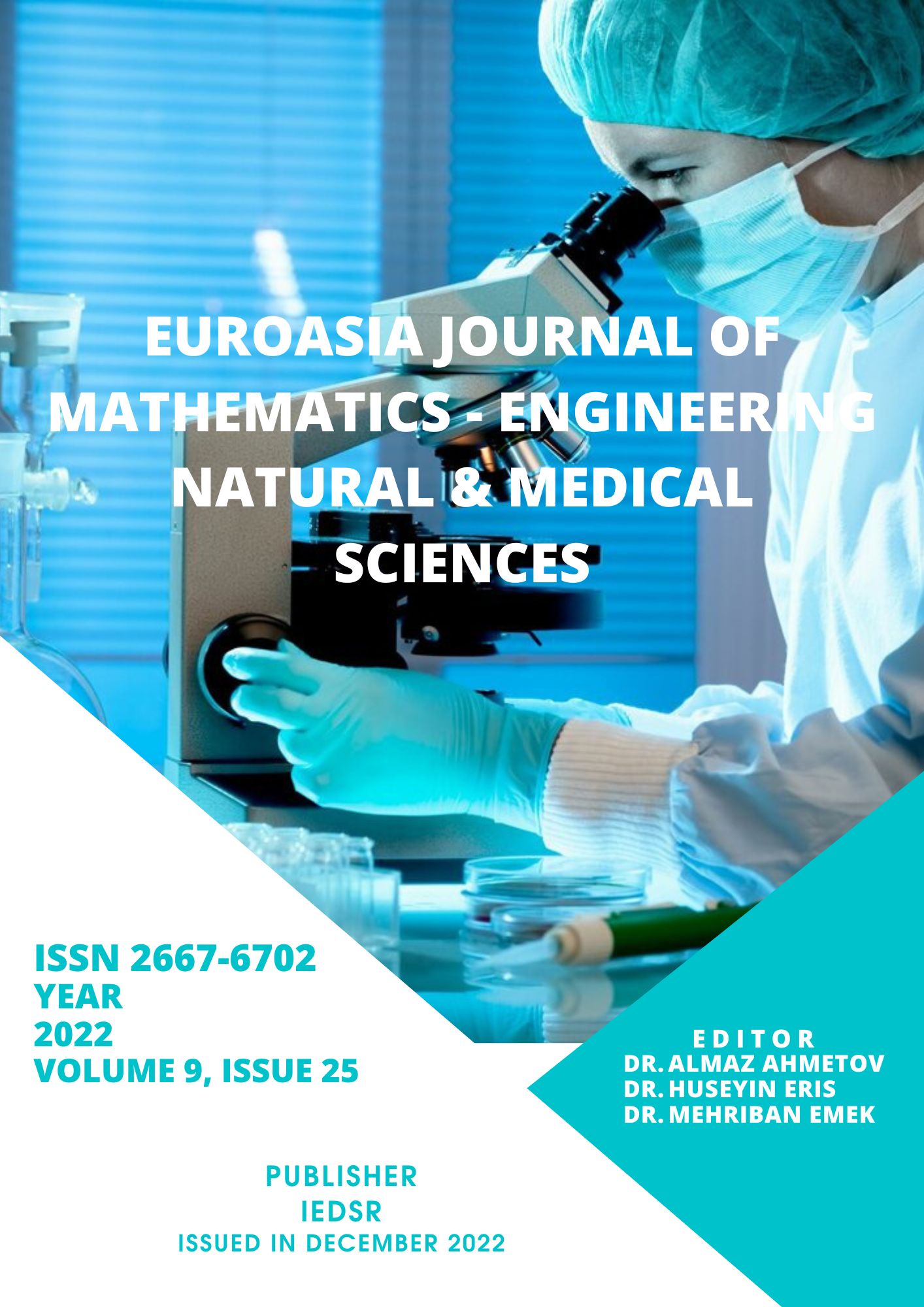Investigation of the Pozzolanic Properties of Basic Mining Slages Exposed to Heat Treatment
DOI:
https://doi.org/10.5281/zenodo.7474665Keywords:
Slag, Strength Activity Index, mine waste, Pozzolanic Activity, Mechanical PropertyAbstract
The increasing population in the world and the need for construction and cement use are increasing day by day. Products that can be used instead of cement are being researched in order to prevent the damage to nature and the energy spent during the cement production stages. Materials that can be used instead of cement are called pozzolans, they are fine-grained structures that exist in nature or are activated later. Most of the pozzolans that are not obtained naturally are in the form of slag. Mine wastes formed after metallurgical processes are called smelting slag. These products, which are obtained as a result of thermal and recovery processes, are waste, but they are a secondary raw material source that can be brought into the economy by secondary processes. The major sources frequently used as pozzolans today are blast furnace slag and steel slag. In this study, it was aimed to determine the pozzolanic activity of heat-treated waste from old mine slags. Samples obtained from the mine waste site were ground to cement size. In order to examine the pozzolanic properties and grindability of the mine waste in the Amasya region, it was reduced to different sizes by grinding at different cycles and times (20, 30, 40, 60, 90 and 120 minutes). The obtained products were analyzed by sieve analysis and the relationship between chemical content, time and cycle was revealed. It is important in which time and cycle the particle size will decrease and the pozzolanic activity will increase. Then, in order to determine the pozzolanic activities, mixtures with pozzolan substitutes were prepared for cement in different ratios, and strength activity indexes were determined at the end of 7/28 day curing periods. As a result of the study, 700 dv./min. in the grinding process, the number of balls does not affect the grinding process, 1000 dv./min. It was observed that the grinding speed significantly reduced the slag and the specific surface area values increased significantly.
References
Akgun, Y., & Yazıcıoğlu, Ö., F. (2017). Determination of Analcime's Pozzolanic Activity and Setting Times, Ordu Univ. J. Sci. Tech., Vol:7, No:1,2017,135-147.
ASTM C 311, (2005) Test Methods for Sampling and Testing Fly Ash or Natural Pozzolans for Use as a Mineral Admixture in Portland Cement Concrete, American Society for Testing and Materials
ASTM C 430 (2005) Test method for fineness of hydraulic cement by the 45-µm (No. 325) sieve, American Society for Testing and Materials, United States of America
ASTM C 618, (2012) Standard Specification for Coal Fly Ash and Raw or Calcined Natural Pozzolan for Use in Concrete, American Society for Testing and Materials.
Cullu, M., Bolat, H., Vural, A., & Tuncer, E. (2016). Investigation of pozzolanic activity of volcanic rocks from the northeast of the Black Sea, Science and Engineering of Composite Materials 23 (3), 315-323.
Cullu, M., Bolat, H., & Vural, A. (2013). Investigation of pozzolanic activities of volcanic rocks in Gümüşhane Region, Gümüşhane University BAP Coordinatorship.
Erdogan T. Y., (2013). Concrete. METU Publication. Ankara
Kulekci, G., & Vural, A. (2021). Analysis and Classification of Water Occuring Naturally in a Metallic Underground Mine, International Halich Conress on Multidisiplinary Scientific Research, 308-316.
Kulekci, G., & Cullu, M. (2021). The Investigation of Mechanical Properties of Polypropylene Fiber-Reinforced Composites Produced With the Use of Alternative Wastes Journal of Polytechnic 24 (3), 1171-1180.
Kulekci, G., & Cullu, M. (2019). The Effect of Polypropylene Fibers, Used in Different Proportions, on Paste Filling, 3rd International Conference on Advanced Engineering Technologies, 313-320.
Kulekci, G. (2021c). Comparison of EFNARC and Round Plate Bending Test Methods Used in Toughness Index Measurement, Recep Tayyip Erdogan University Journal of Science and Engineering Sciences, 2:2,120-126.
Kulekci, G. (2021b). Comparison of Field and Laboratory Result of Fiber Reinforced Shotcrete Application, Periodica Polytechnica Civil Engineering 65 (2), 463-473.
Kulekci, G., Yilmaz, A.O., & Cullu, M. (2021). Experimental Investigation of The Usability of Construction Waste as Aggregate, Journal of Mining and Environment 12 (1), 63-76.
Kulekci, G. (2021a). The Effect of Pozzolans and Mineral Wastes on Alkali-silica Reaction in Recycled Aggregated Mortar, Periodica Polytechnica Civil Engineering 65 (3), 741-750.
Kılınckale, F.M. (1996). The pozzolanic activity of various pozzolans and the strength of the mortars produced with these pozzolans, IMO Technical Journal, 1217-1229.
Massazza, F. (1993). Pozzolanic Cement, Cement and Concrete Composites, v:15, pp: 185-214.
TS 25, (2008). Natural pozzolan (trass)- Used in cement and concrete- definitions, requirements and eligibility criteria. Turkish Standardization Institute, Ankara.
TS EN 197-1, (2012). Cement-Part 1: General Cements - Composition, properties and eligibility criteria, Turkish Standardization Institute, Ankara
TS 196-6, (2010). Cement Test Methods - Part 6: Fineness Determination, Turkish Standardization Institute, Ankara
Yalcın, H., & Guru, M. (2006). “Cement and Concrete”, ISBN: 9944-341-16-9, S:45, Palme Pub., Ankara.
Downloads
Published
How to Cite
Issue
Section
License
Copyright (c) 2022 Euroasia Journal of Mathematics, Engineering, Natural & Medical Sciences

This work is licensed under a Creative Commons Attribution-NonCommercial 4.0 International License.

